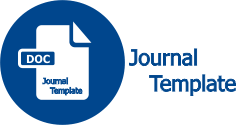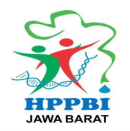Development of Contextual Visual Media in Increasing the Scientific Literacy of Middle School/ MTs Students
DOI:
https://doi.org/10.25134/quagga.v17i1.343Keywords:
Contextual, Literacy, Media, Science, VisualAbstract
The low level of students ' scientific literacy abilities can be caused by learning habits that are still conventional . Developing digital- based learning media is a good learning media to use in learning in the era of the industrial revolution 4.0 and is believed to be capable to increase students ' scientific literacy . The aim of this research is to develop contextual visual media that can increase students ' scientific literacy . The method used in this research uses the ADDIE model developed by Dick and Carry . The results of the research is in the form of contextual visual media which was developed in five stages , namely analysis was carried out by observing and interviewing school principals and subject teachers , design was carried out by making stories boards , at the development stages validation was carried out by material experts and learning design experts , implementation was carried out in the experimental class , and the evaluation stages was carried out by improving the visual media developed according to input from the validator team . The validity test results are in the very good category , so the visual media developed is suitable for use in research . Based on the t test results of 0.001, these results indicate that the hypothesis is accepted , so it can be concluded that there is an increase in scientific literacy after learning activities using the developed contextual visual media.
References
Ahmad, A.P., Daud, F., & Bahri, A. (2022). The Relationship between Learning Motivation and the Science Literacy Ability of Class XII Students at SMA Negeri 2 Luwu on Coordination System Material. International Conference on Life and Biology Education. http://eprints.unm.ac.id/29831/
Ambrose, S.A., Bridges, M.W., Dipietro, M., Lovett, M.C., & Norman, M.K. (2010). 7 Research-Based Principles for Smart Teaching . http://tlc.temple.edu/sites/tlc/files/resource/pdf/What Factors Motivate Students to Learn_.pdf
Bhatti, Z., Abro, A., Gillal, A. R., & Karbasi, M. (2017). Be-Educated: Multimedia Learning through 3D Animation. International Journal of Computer Science and Emerging Technologies , 1 (December), 13–22.
Carney, R.N., & Levin, J.R. (2002). Pictorial Illustrations Still Improve Students' Learning from Text. Educational Psychology Review , 14 (1), 5–26. https://doi.org/10.1023/A:1013176309260
Falah, F., & Rusydiyah, E.F. (2022). Evaluation of Articulate Learning Media. Educational Technology , 1 (2), 13–22. https://uia.e-journal.id/akademika/article/view/1683/1091
Fuadi, H., Robbia, AZ, Jamaluddin, J., & Jufri, AW (2020). Analysis of factors causing low scientific literacy abilities of students. Scientific Journal of the Educational Profession , 5 (2), 108–116. https://doi.org/10.29303/jipp.v5i2.122
Gingga Prananda, Ali Wardana, & Yuliadarmianti. (2020). Development of Learning Video Media Theme 6 Subtheme 2 for Class Students at SD Negeri 17 Pasar Masurai 1. JuDha_PGSD: PGSD Dharma Journal , 1 (1), 38–45. http://ejournal.undhari.ac.id/index.php/judha
Muliastrini, NKE & NNLH (2020). The Influence of a Contextual Learning Approach Assisted by Visual Media on Increasing Achievement Motivation and Science Learning Outcomes in Students. Journal of Educational Sciences , 4 (2), 318–333.
OECD. (2019). PISA 2018 Assessment and Analytical Framework. In OECD Publishing.
Rojanah, R. (2021). Use of Visual Media on Student Learning Motivation in Jurisprudence Subjects at Madrasah Ibtidaiyah. Journal of Elementary Educational Research , 1 (1), 40–48. https://doi.org/10.30984/jeer.v1i1.43
Starr, C.R., Tulagan, N., & Simpkins, S.D. (2022). Black and Latinx Adolescents' STEM Motivational Beliefs: a Systematic Review of the Literature on Parent STEM Support. Educational Psychology Review , 34 (4), 1877–1917. https://doi.org/10.1007/s10648-022-09700-6
Sukmadewi, LPM, & Suniasih, NW (2022). Contextually Based Audio Visual Media in Science Content Improves Student Learning Outcomes. Journal of Pedagogy and Learning , 5 (1), 138–149. https://doi.org/10.23887/jp2.v5i1.45898
Wijayanti, MV, & Mawardi, M. (2022). Application of the Contextual Learning Model Assisted by Audio Visual Media to Improve Student Learning Outcomes. Journal of Education , 31 (3), 317. https://doi.org/10.32585/jp.v31i3.2839
Zulkarnain, Z., Heleni, S., & Thahir, M. (2020). Digital literacy skills of math students through e-learning in the COVID-19 era: A case study at Riau University. Journal of Physics: Conference Series , 1663 (1). https://doi.org/10.1088/1742-6596/1663/1/012015
Downloads
Published
How to Cite
Issue
Section
License
Copyright (c) 2025 Euis Sri Hastuti, Anna Fitri Hindriana, Agus Yadi Ismail

This work is licensed under a Creative Commons Attribution-ShareAlike 4.0 International License.




















